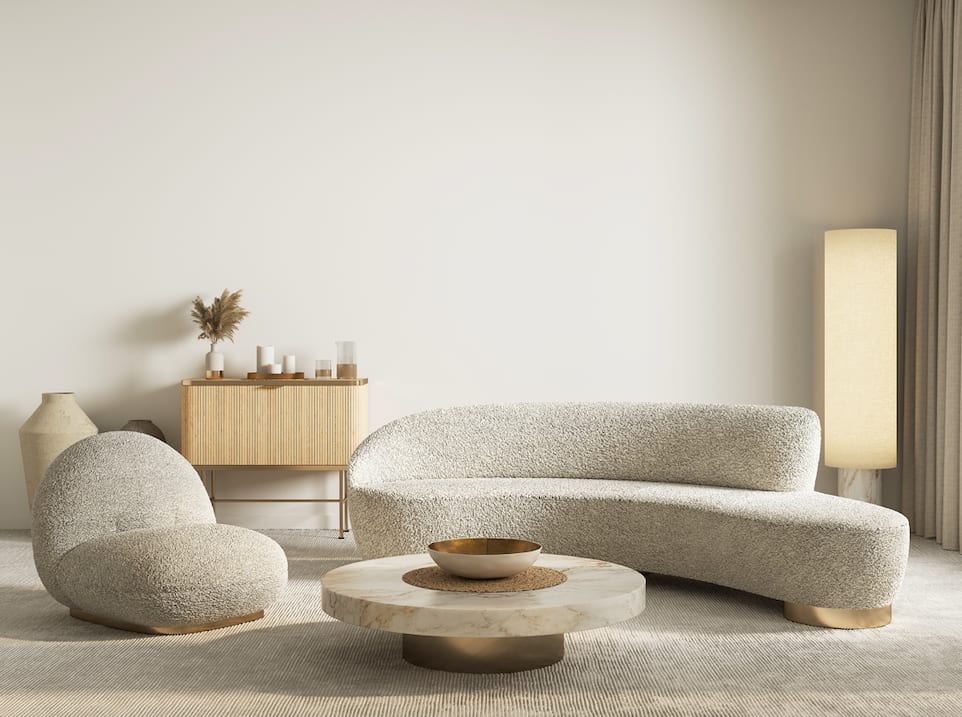Interior design is more than just good looks. In today's society, with access to so many different styles and products, everyone thinks they can do interior design. Everyone believes they have a good sense of furniture fashion, but most people need to learn the basic rules.
The concept is to make different elements work together in a tight collaboration. When everything is related to things around you, you'll experience a natural state of calmness, regardless of the room. Mastering harmony is among the top requirements to create a top-notch interior design concept.
Find a purpose first
From internal glazed doors and wall decorations to furniture and lighting, you need everything to serve a purpose. Every piece of decoration needs a role in this whole scenario.
For instance, most people overlook doors, but they're massive and can drastically change the outcome of a room, so start with them. They serve an essential purpose as well. Go on from there. Think about the sofa, an armchair, a small coffee table, a nightstand, you name it.
Does it have a purpose?
Considering the purpose of each piece will help you declutter the area, which is the best thing you can do for a harmonious appearance. At the same time, you'll also be able to connect different items together and blend everything in.
Every item in a room must tell a story about you, your family, your lifestyle, or your personal preferences. If everything has a meaning, harmony will naturally be part of the process.
Aim for visual balance
You might have heard people saying it, or you might have felt it yourself. Is there too much weight in a room? Exactly, some places feel heavy. Other times, it's only part of the place, but just certain parts of a room. It's not a physical weight, but a visual one.
It's easy to make this mistake by simply adding too much on one side. This way, a specific part of the room feels heavier, and you'll have the natural instinct to avoid it without even realising it.
Imagine too many heavy pieces of furniture on one side of the room. Then, think about the other side of the room, which feels empty. Throw in some dark colours, and while individual pieces may look alright when taken separately, you will need more than mixing them.
The room will simply feel unbalanced and uncomfortable.
To find some harmony, place all the colourful accents, décor, and furniture in different places around the room only to ensure a balanced result. It's a small change, but it will work wonders on the room without any investment.
The negative space and its role
There are a series of rules in interior design, both written and unwritten. Some of them change according to current tendencies. These days, minimalism seems to be the definition of elegance and style. In other words, less is more.
A minimalist room feels clean and modern. A cluttered room feels difficult to look at. It overwhelms and puts pressure on you the moment you get in there. It's just too uncomfortable.
Although balance is highly recommended in interior design, the so-called negative space does have its role as well. Negative space refers to a blank part of the room, with no furniture, no colours and almost no decorations.
It sounds difficult to think about it, but the concept is popular these days with a simple purpose. If the room feels a bit cluttered, this negative space is where you rest your eyes.
It takes the pressure of the respective room and it practically restores balance inside it.
Brains love symmetry
Whether you know it or not, your brain likes symmetry. Sure, an awkwardly shaped piece of furniture can change everything, but overall, your brain will crave for symmetry, and that's one of the best ways to add some order and balance to certain rooms.
Furthermore, symmetry is also about rhythm. No matter how many pieces of furniture or décor you get, make sure they're symmetrical and placed correctly. For instance, curtains are excellent. Then, think about tables, lamps, mirrors, or chairs. All these things can add symmetry.
Symmetry also redefines harmony. And as usual, as it may sound, when everything is symmetric, a little asymmetry will work great and become a focal point.
Now, how do you add symmetry to a room? Simple. First, identify the centre line in the respective room. Second, go ahead and start placing a few elements along this line. As you cover this line, you'll notice the room feels much more harmonious, at least from a visual point of view.
Seating areas with harmony in mind
The seating area requires a top-notch connection. Seating elements must be grounded and well-planned, but this isn't the only thing to pay attention to. You also want to avoid the temptation to add floating objects all over the area. If they're on their own, they'll disrupt the setting.
As a general rule of thumb, you'll need a soothing space for everything to feel connected. Rugs? Excellent, as they connect more seating areas. Layers? Excellent. They can connect objects that are too far away.
The key around seating areas is to ensure things are well connected, and you'll naturally feel more relaxed in that room.
As a final conclusion, there are more ways to achieve harmony into a home. It looks like most of these things are related to connections.
At the same time, clutter can be an issue, even if well organised. Keep things simple, both visually and mentally. If your mind learns to associate a place with harmony, it will naturally become like that with the right arrangements and décor items.









